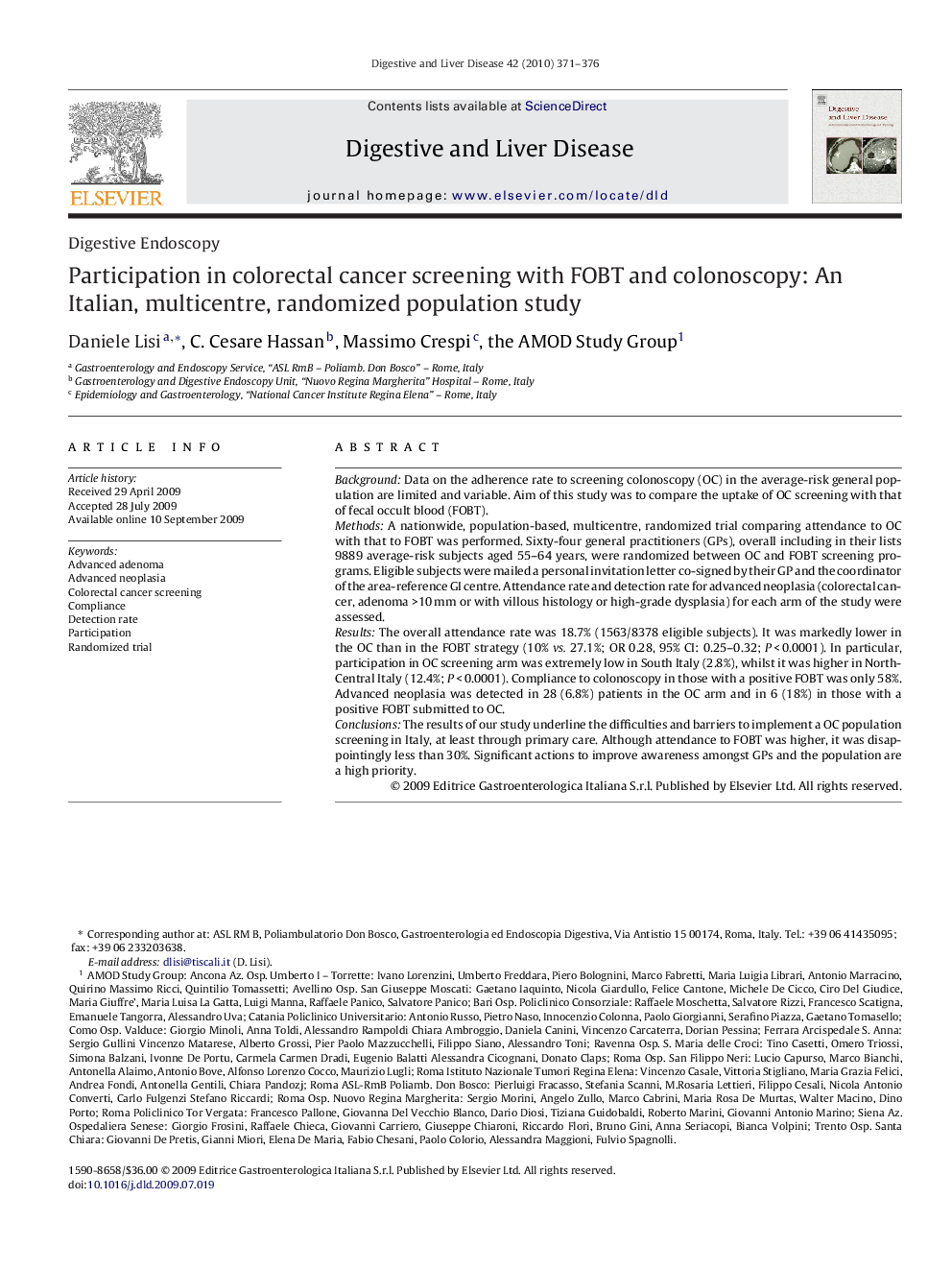| Article ID | Journal | Published Year | Pages | File Type |
|---|---|---|---|---|
| 3264039 | Digestive and Liver Disease | 2010 | 6 Pages |
BackgroundData on the adherence rate to screening colonoscopy (OC) in the average-risk general population are limited and variable. Aim of this study was to compare the uptake of OC screening with that of fecal occult blood (FOBT).MethodsA nationwide, population-based, multicentre, randomized trial comparing attendance to OC with that to FOBT was performed. Sixty-four general practitioners (GPs), overall including in their lists 9889 average-risk subjects aged 55–64 years, were randomized between OC and FOBT screening programs. Eligible subjects were mailed a personal invitation letter co-signed by their GP and the coordinator of the area-reference GI centre. Attendance rate and detection rate for advanced neoplasia (colorectal cancer, adenoma >10 mm or with villous histology or high-grade dysplasia) for each arm of the study were assessed.ResultsThe overall attendance rate was 18.7% (1563/8378 eligible subjects). It was markedly lower in the OC than in the FOBT strategy (10% vs. 27.1%; OR 0.28, 95% CI: 0.25–0.32; P < 0.0001). In particular, participation in OC screening arm was extremely low in South Italy (2.8%), whilst it was higher in North-Central Italy (12.4%; P < 0.0001). Compliance to colonoscopy in those with a positive FOBT was only 58%. Advanced neoplasia was detected in 28 (6.8%) patients in the OC arm and in 6 (18%) in those with a positive FOBT submitted to OC.ConclusionsThe results of our study underline the difficulties and barriers to implement a OC population screening in Italy, at least through primary care. Although attendance to FOBT was higher, it was disappointingly less than 30%. Significant actions to improve awareness amongst GPs and the population are a high priority.
